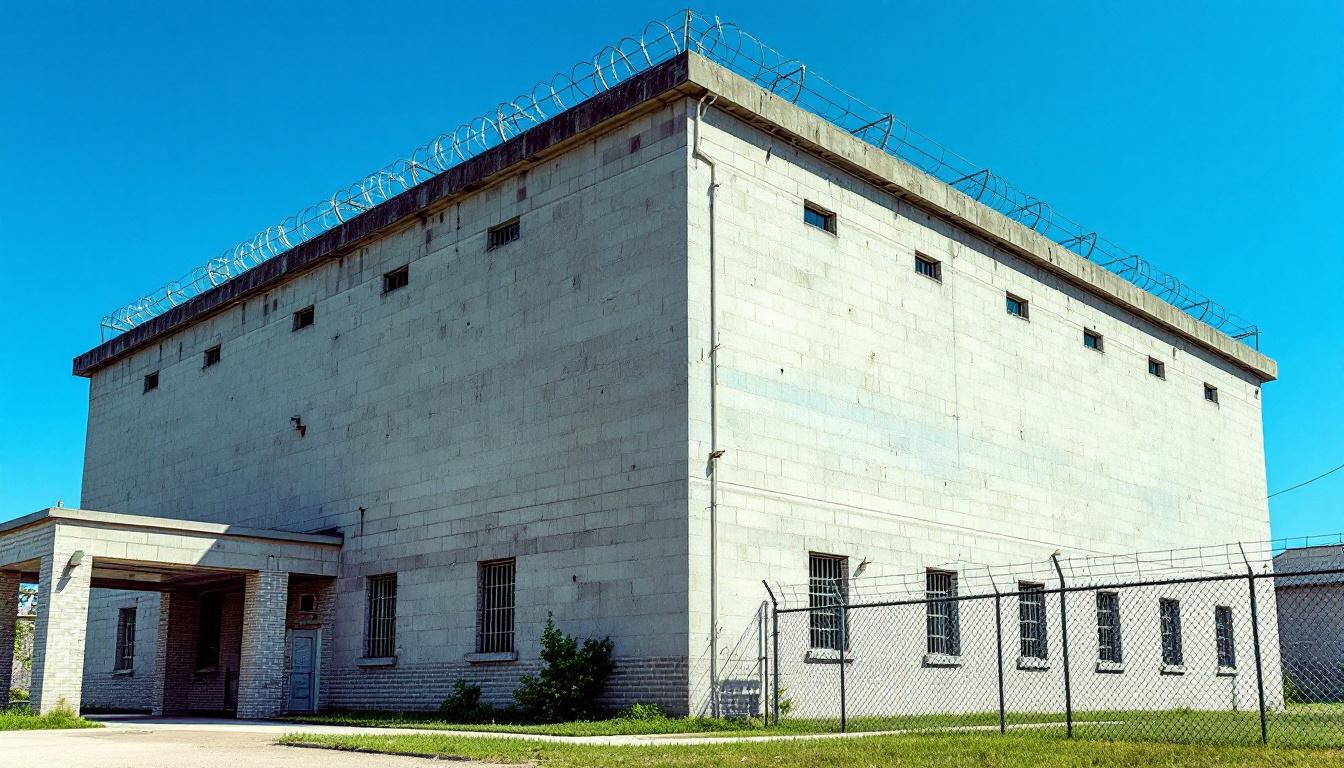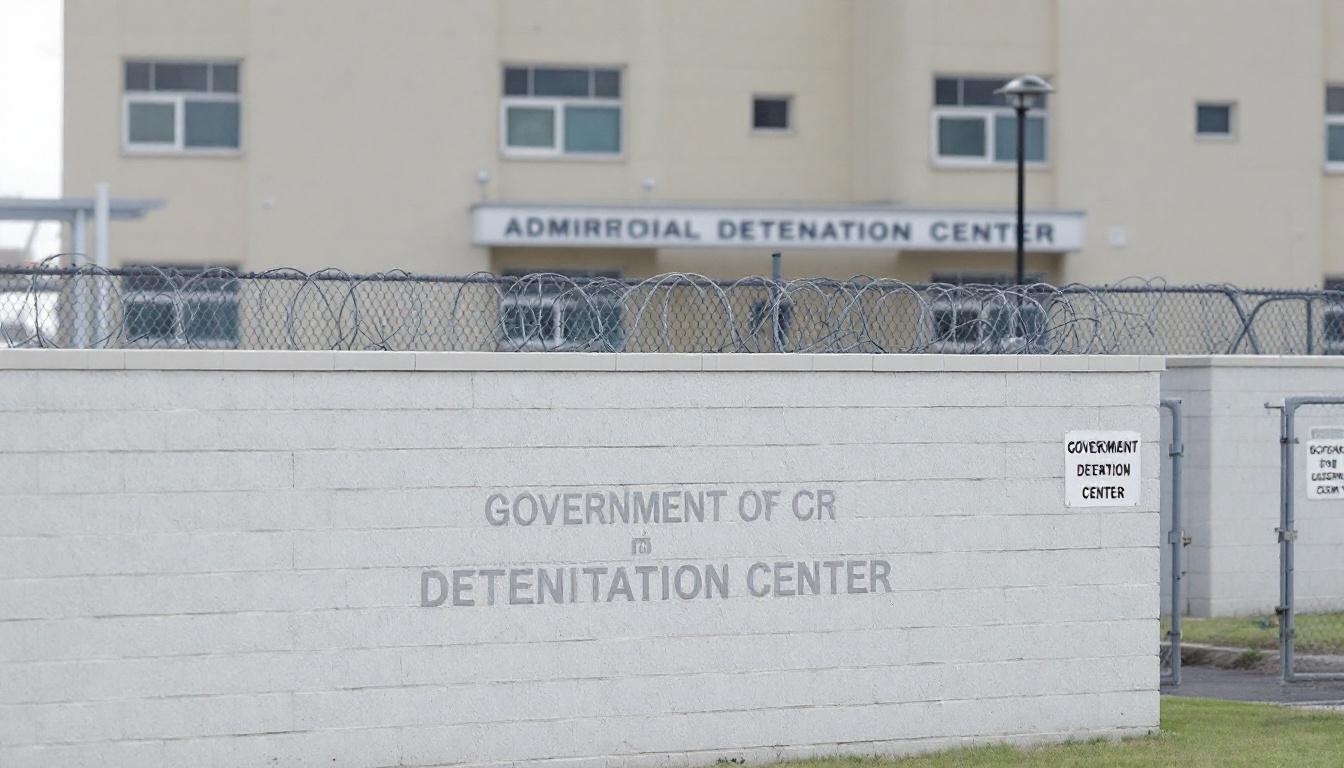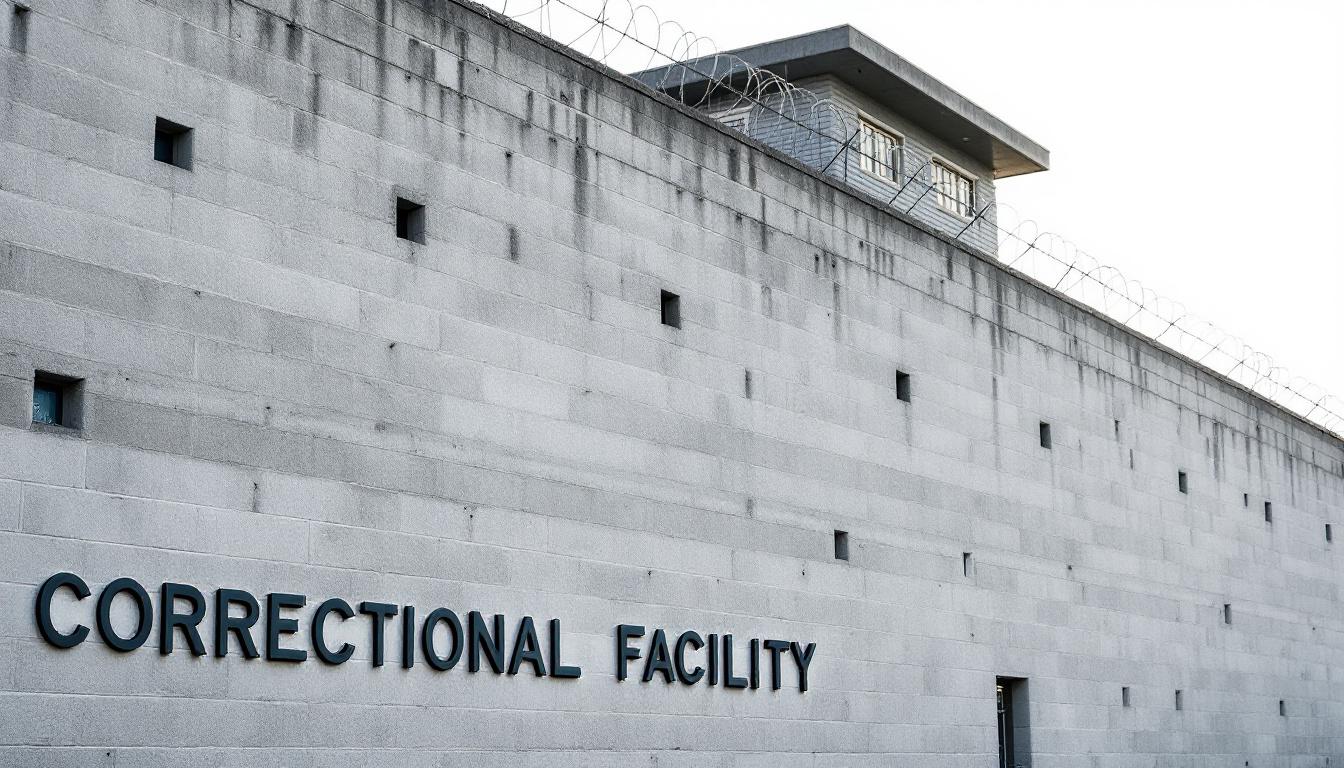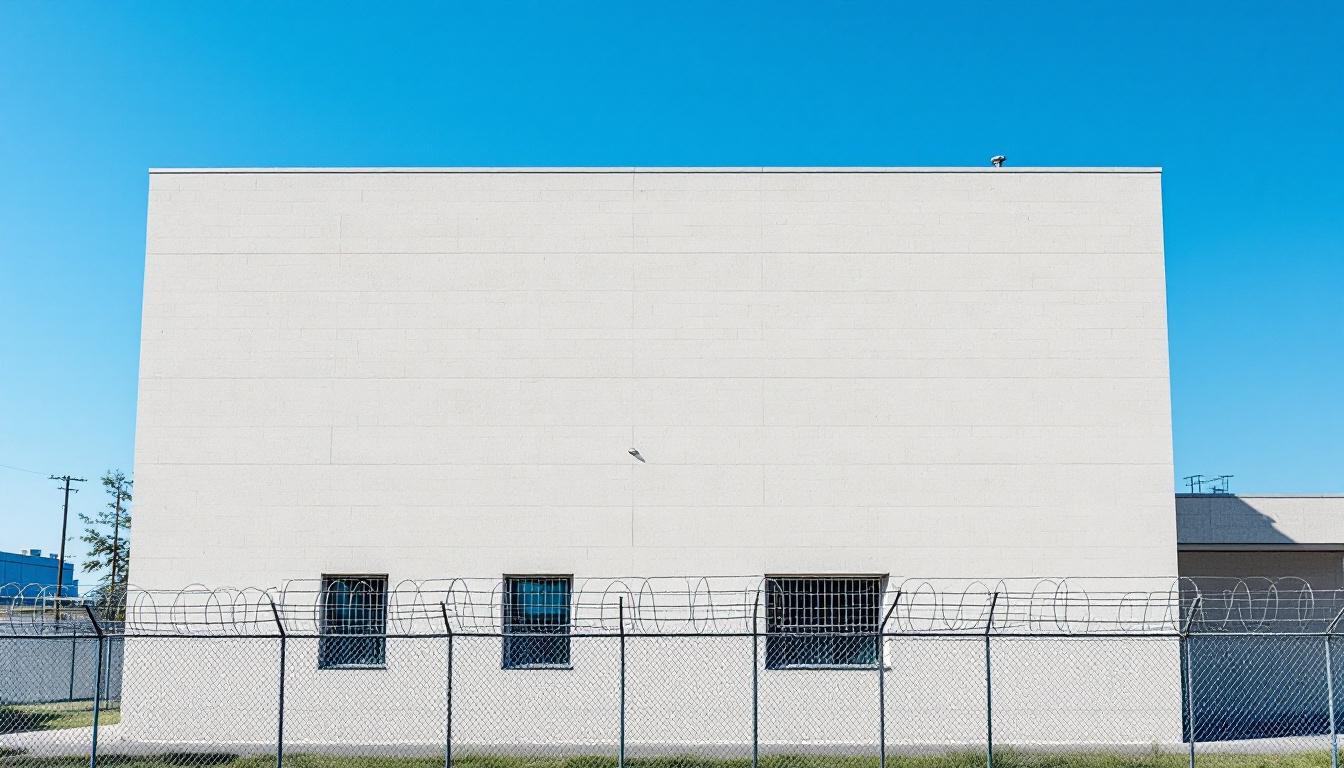
Quick Navigation
How to contact an inmate at Utah County Jail
This comprehensive guide will walk you through how to connect with an inmate at Utah County Jail. Follow the steps below to find an inmate and send letters and photos:
- Search for the inmate using our search tool below
- Create your account or log in to Penmate
- Write your message (up to 6,000 characters)
- Send instantly - inmates receive printed copies daily
Find an Inmate
Search for an inmate to start communicating today
Tip: You can search by first name, last name, or inmate ID number
To contact a person at Utah County Jail start by searching for the person on the official facility website. Perform a search by following these steps:
- Step 1: Enter their first name and last name into the search form and click "Search"
- Step 2: Locate their inmate record
- Step 3: Write down their Inmate ID and any housing information provided
Important! Be sure to enter the person's full name. Nicknames should not be used.
How to Send Messages to Inmates

You can use your phone or computer to send emails, letters, and photos to an inmate. Messages are sent electronically to inmate tablets or kiosks at the facility. If you would like to send a message, start by searching for an inmate at Utah County Jail.
Sending Photos and Postcards

A great way to send love and support to a loved one at Utah County Jail is to send photos and postcards. It only takes a few minutes to send photos from your phone and it makes a huge difference. You can also mail postcards with words of support and inspiration, or design your own postcard for special moments like birthdays and holidays.
Important! Be sure not to send any explicit photos or they may not be approved by the facility. You can also use a photo printing app like Penmate to make sure your photos are printed at the correct size (4x6 or 3x5) and are mailed according to the rules and regulations of Utah County Jail.
Frequently asked questions about Utah County Jail
-
How long does it take to deliver a message?
If you're sending an email message your letter is usually delivered within 24-48 hours. For messages sent via mail you should expect delivery within 3-7 days. All messages will need be approved by Utah County Jail.
-
How much does it cost to send a message to Utah County Jail?
You can send a message free using your phone or mail a message via USPS for the price of a $0.60 stamp and envelope. You can also purchase credits or e-stamps from services starting at $1.99.
-
What services can I use to contact an inmate at Utah County Jail?
Penmate
You can use Penmate to send letters and photos to an inmate from your phone. It's an easy way to stay in touch during your loved one's incarceration. Use the inmate locator to find an inmate's location and contact information, then you can send messages within a few minutes.
Securus messaging
Securus may be another option for communicating with an inmate at Utah County Jail. You can create a friends and family account and purchase credits to send messages. All messages will be reviewed and must be approved by the facility.
JPay
Some county jails and state prisons may support sending messages with JPay. You must register an account with the system, find your loved one, and purchase stamps to send messages. For some locations you can also attach photos.
Smart Jail Mail
You may also check if Smart Jail Mail is available at Utah County Jail. Smart Jail Mail is operated by Smart Communications and has contracted with some state and county jails. After purchasing credits, your messages and photos are sent to the facility, printed out, and then handed out to your loved one.
-
What is the mailing address of Utah County Jail?
Mailing address:
Utah County Jail
3075 N Main St
Spanish Fork, UT 84660
Phone: (801) 851-4200Business hours:
- Monday: Open 24 hours
- Tuesday: Open 24 hours
- Wednesday: Open 24 hours
- Thursday: Open 24 hours
- Friday: Open 24 hours
- Saturday: Open 24 hours
- Sunday: Open 24 hours
-
What are the visiting hours at Utah County Jail?
Visiting hours at Utah County Jail vary by housing unit and security level. Generally, visits are scheduled on weekends and holidays, with some facilities offering weekday visits. Contact the facility directly at (801) 851-4200 or check their website for the current visiting schedule. Visits typically last 30-60 minutes and must be scheduled in advance.
-
What items are prohibited when sending mail to Utah County Jail?
Prohibited items typically include: cash, personal checks, stamps, stickers, glitter, glue, tape, staples, paperclips, polaroid photos, musical or blank greeting cards, hardcover books, magazines with staples, and any items containing metal or electronics. Only send letters on plain white paper with blue or black ink. Photos must be printed on regular photo paper (no Polaroids). Always check with Utah County Jail for their specific mail policies.
-
How do I send money to an inmate at Utah County Jail?
You can send money to an inmate at Utah County Jail through several methods: 1) Online using JPay, Access Corrections, or the facility's approved vendor, 2) Money orders mailed directly to the facility with the inmate's name and ID number, 3) Kiosks located in the facility lobby, or 4) Over the phone using a credit or debit card. Fees vary by method, typically ranging from $2.95 to $11.95 per transaction.
-
Can I schedule a video visit with an inmate at Utah County Jail?
Many facilities now offer video visitation as an alternative to in-person visits. At Utah County Jail, video visits may be available through services like Penmate, Securus Video Connect, GTL, or ICSolutions. Video visits typically cost $10-20 for 20-30 minutes and must be scheduled in advance. You'll need a computer or smartphone with a camera and reliable internet connection. Contact the facility for their specific video visitation policies and approved vendors.
-
What identification do I need to visit an inmate at Utah County Jail?
All visitors must present valid government-issued photo identification such as a driver's license, state ID, passport, or military ID. Minors must be accompanied by a parent or legal guardian who can provide the minor's birth certificate. Some facilities require visitors to be on the inmate's approved visitation list, which may require a background check. Contact Utah County Jail for specific ID requirements and visitor approval procedures.
-
How can I find out an inmate's release date?
To find an inmate's release date at Utah County Jail, you can: 1) Use the online inmate search tool if available, 2) Call the facility's records department, 3) Contact the inmate's case manager or counselor, or 4) Have the inmate provide this information during a call or visit. For privacy reasons, some facilities only release this information to immediate family members.
Facility Overview
Official Website

About Utah County Jail
Serving the Las Vegas community and surrounding areas of Utah, this state correctional facility operates as an integral component of the state’s broader commitment to public safety and offender rehabilitation. The Utah State Prison functions within Utah’s comprehensive correctional framework, typically housing individuals serving various sentence lengths while maintaining focus on both security protocols and reintegration preparation. Located in the distinctive landscape of Utah’s mountain region, the facility generally coordinates with state-level initiatives designed to reduce recidivism through structured programming approaches.
The UT correctional facility typically emphasizes operational philosophies that balance custody requirements with rehabilitation opportunities, often including educational programming, vocational training options, and behavioral intervention services. Inmates services may encompass basic healthcare provision, mental health support resources, and library access, though specific program availability can vary based on security classifications and individual case factors. The facility generally operates under state correctional standards that prioritize both community protection and offender accountability measures.
As part of Utah’s state prison system, this Las Vegas facility typically contributes to broader correctional goals through structured daily operations, case management protocols, and pre-release planning services. The institution may offer various work assignments and skill-building opportunities designed to support eventual community reintegration, while maintaining the security measures necessary for safe facility operations. Family visitation programs and communication services are generally available to help maintain important social connections during incarceration periods.
Programs & Services
Personal growth and skill development form the cornerstone of rehabilitation efforts, creating pathways for inmates to build meaningful lives beyond incarceration. The facility’s comprehensive approach recognizes that lasting change requires addressing multiple aspects of an individual’s circumstances and capabilities. Through structured programming and supportive environments, inmates typically have access to services designed to enhance their educational foundation, develop marketable skills, and address underlying issues that may have contributed to their incarceration.
Educational services often include high school diploma programs for those seeking to complete their basic education, while computer literacy courses help inmates develop essential digital skills for modern employment. Civic education components may provide instruction on community engagement and civic responsibilities. Furthermore, vocational training opportunities typically encompass construction trades and other hands-on skills that can lead to stable employment upon release. These educational and vocational services work together to create a foundation for economic stability and personal achievement.
Therapeutic communities represent a specialized approach to addressing substance abuse and behavioral issues through peer support and structured programming. These residential treatment environments may provide intensive counseling, group therapy sessions, and life skills development in a supportive setting. Inmates participating in therapeutic communities often benefit from extended programming that addresses not dedicated addiction issues but also the underlying factors that contribute to criminal behavior, creating comprehensive support for long-term rehabilitation and successful community reintegration.
Daily Life & Visitation
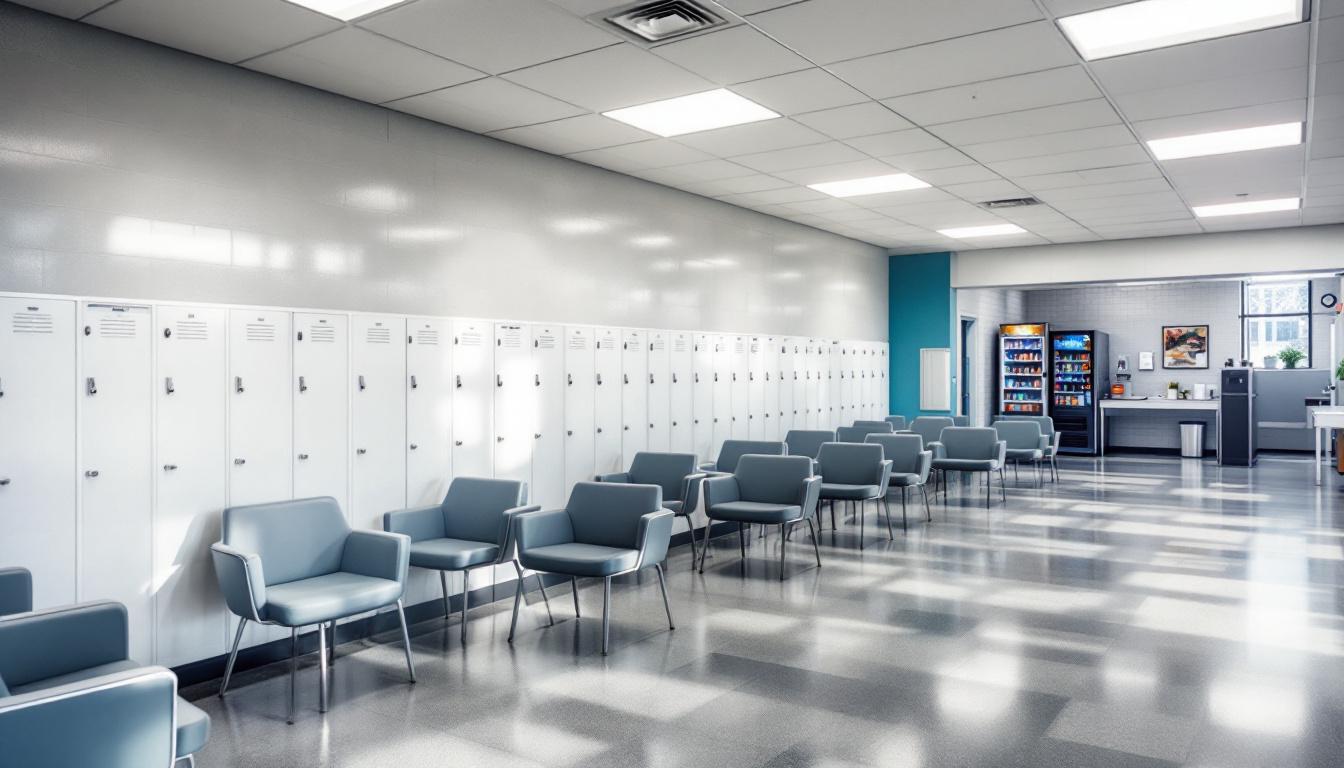
Behind concrete walls and reinforced doors, the living environment at Utah State Prison shapes every aspect of an inmate’s daily existence. The structured routine currently begins before dawn and continues throughout the day with scheduled activities, meals, and mandatory counts. Inmates typically wake to the sound of facility announcements, followed by cell inspections and the gradual opening of housing units for breakfast service.
Living accommodations generally consist of shared cells or dormitory-style housing units, where inmates adapt to limited personal space and the constant presence of others. Each housing area usually provides basic furnishings including beds, storage areas, and shared bathroom facilities. Furthermore, inmates may personalize their living spaces with approved items from the commissary, such as photographs, books, and personal hygiene products, helping create a sense of individual identity within the institutional setting.
Structured programming schedules provide inmates with opportunities for education, vocational training, and recreational activities throughout the week. Work assignments often include kitchen duties, maintenance tasks, and facility operations that help inmates develop job skills while contributing to daily operations. Although visitation policies may vary, inmates typically maintain contact with family members through scheduled visits, phone calls, and written correspondence, which often serves as a crucial connection to life beyond the facility walls.
Ready to Connect?
Start communicating with your loved one today
Search for an Inmate
